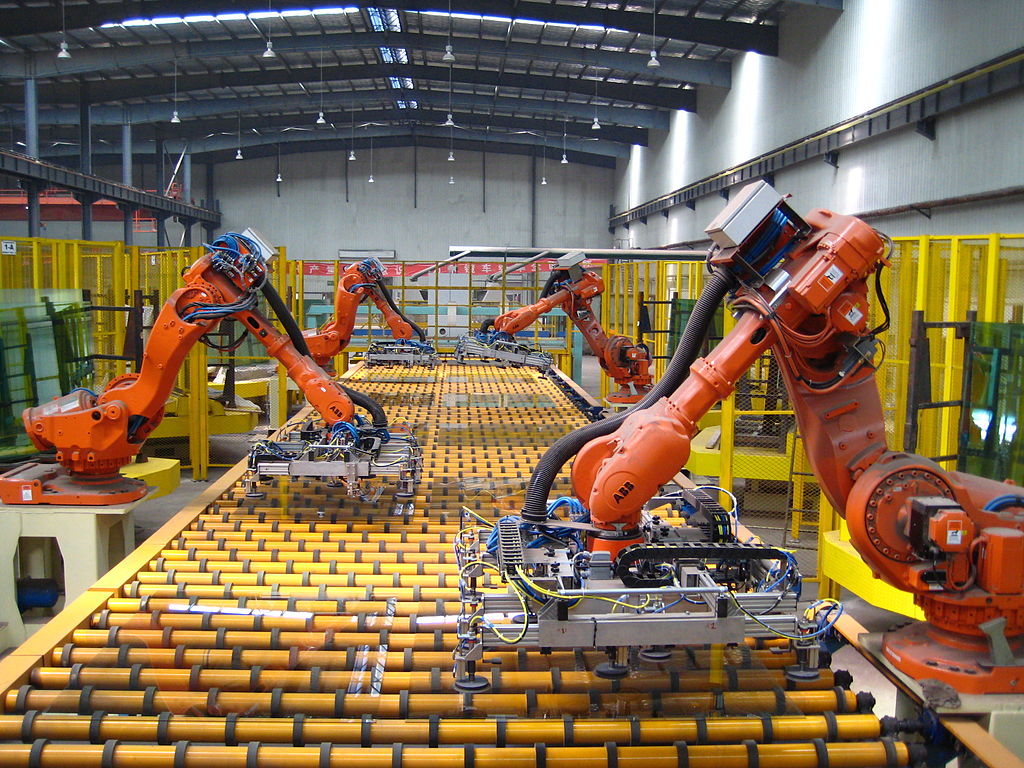
The industrial intelligentization, featuring displacement of human being with robotics, will reduce product costs in an unprecedented way and eliminate China’s competitive export advantages gained through huge low-cost labor.
The 9/11 attacks represented a direct challenge to the global unipolar system which appeared after the disintegration of the Soviet Union. As a result, terrorism became the primary threat to international security and counterterrorism replaced, at least for the moment, diplomatic wrangling between major powers at the core of international politics. The two wars conducted in the name of counter-terrorism, the Afghanistan and Iraq wars, consumed American national strength fast, putting an end to America’s Cold War victory dividend and straining the previously solid and capable unipolar system.
The US experienced economic recessions in the last three quarters of 2001, as the economy lacked a technology revolution to drive it. Financial oligarchs in the US intensified capital operations, which further hollowed out the real economy and fueled a glut of financial derivatives, ultimately leading to the 2008 financial crisis. The financial crisis dealt a heavy blow to the American economy and exacerbated its debt crisis, thus seriously undermining America internationally.
When the international financial crisis occurred, the world economy had been suffering without a new industrial and technological revolution to drive development. Against this backdrop, major countries and groups hoped to create external forces for economic growth by establishing new mechanisms for integration. To this end, the Obama administration worked to develop the TPP in the Asia Pacific and TITP across the Atlantic. While China put forward the Belt and Road initiatives in September 2013, the EU sped up its plans in Eastern Europe, and Russia formulated the Eurasian Economic Union roadmap, resulting in fierce clashes of geo-economic interests and, ultimately, the Ukraine crisis.
During the Obama presidency, the global governance system became looser. America’s strategic center of gravity shifted eastward from Europe and other hotspots to the Asia Pacific. This shift, plus the withdrawal of troops from Iraq in 2011 and from Afghanistan in 2014, brought the focus of international politics back from counter terrorism to strategic competition between great powers.
This shift shows that Russia and former Soviet countries are no longer foremost on America’s international agenda. US-China relations have taken the place of US-Russia relations as the world’s most important bilateral relationship.
China’s reform and opening up started in the late 1970s and placed it on a road to urbanization and industrialization. As the process began with the rural population (80% of all Chinese), plus the fact that China then enjoyed the second-mover advantage of drawing upon industrial technologies from advanced countries, it enabled the Chinese economy to grow at a high speed for a long period. Additionally, as the industrialization process has been dominated by the government, large excess production capacity has accumulated. The difficulty was compounded by what looked like an emerging middle income trap, forcing the Chinese government to at least partially abandon its policy of keeping a low profile, and to forcefully promote the Belt and Road initiative.
The policy, subjectively designed to transfer excess capacity and produce more stimulus for trade, objectively causes a reshaping of international trade patterns. It has brought about some challenges. On the one hand, while the question of trade balance (or the lack of it) causes a trade war between the US and China, competition between the two appears in all fields of global trade. On the other, traditional spheres of influence of countries along the belt and road have been affected, changing their China policy. For example, India’s policy towards China is now more hostile and Russia has not taken part in two fairly influential four-country meetings in Central Asia and Afghanistan involving China.
Globalization has deepened the international division of labor. The US dollar’s traditional advantages since WWII shaped America’s position as the financial center of the world economy and fueled lopsided expansion of the financial rentiers in American society and the hollowing-out of the real economy. As a result, the wealth gap between employees in the financial sector and the large number of people in the productive industries, where jobs disappear constantly, has increased. This not only led to the ‘occupy Wall Street’ movement but also contributed to Trump’s unexpected victory in the presidential election, populism thus becoming a leading ideology in American society. On the other side of the Atlantic, this was seen in the Brexit referendum. Populist anti-globalization waves have become common. As such, China, which has benefited a lot from globalization, now faces a worsening international environment.
Looking into the future, the biggest challenge for China lies with the accelerated industrial intelligentization in countries at the highest end of industrial technologies such as the US and Japan. The industrial intelligentization, featuring displacement of human being with robotics, will reduce product costs in an unprecedented way and eliminate China’s competitive export advantages gained through huge low-cost labor. As men of vision have already pointed out, while a fierce trade war between China and the US gradually starts, industrial technological competition is at the center of China-US competition.
There is another danger. China has taken great effort and borne great cost to develop infrastructure in countries along the Belt and Road. If it does not offer competitive goods for these markets, what China has done may well become a ‘wedding gown’ for others: countries with intelligentized industries will corner the markets with better and cheaper goods.



